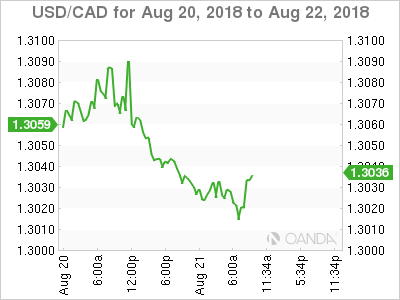Wholesale sales declined for the second time in three months, down 0.8% to $63.1 billion in June. Sales were down in five of seven subsectors, accounting for 71% of total wholesale sales. The motor vehicle and parts and the miscellaneous subsectors contributed the most to the decline.
In volume terms, wholesale sales decreased 1.1%.
On a quarterly basis, wholesale sales increased 1.0% in current dollars and 0.7% in constant dollars in the second quarter. This marked the ninth consecutive quarterly increase in both current and constant dollars.
Sales down in five subsectors
The motor vehicle and parts subsector reported the largest decline in dollar terms, down 1.9% to $10.9 billion in June, mainly due to lower sales in the motor vehicle industry (-2.4%). This marked the third consecutive decline for the motor vehicle and parts subsector.
Sales in the miscellaneous subsector fell 2.2% to $8.2 billion on lower sales in the agricultural supplies industry (-8.8%). The declines in June did not offset the gains in May for both the industry and the subsector. In volume terms, the agricultural supplies industry decreased 8.5%. In June, exports of fertilizer, pesticides and other chemical products declined 6.4%.
The machinery, equipment and supplies subsector fell 0.6% to $13.0 billion, led by the other machinery, equipment and supplies industry (-4.7%).
Sales in the building material and supplies subsector edged up 0.4% to $9.7 billion in June, its fifth consecutive increase. The metal service centres industry led the gains, up 3.5% in current dollars and 2.0% in constant dollars. This marked the second consecutive monthly increase in both current and constant dollars.
On a quarterly basis, the building material and supplies subsector (+6.6%) led the gains in the second quarter, attributable to higher sales in May and record sales levels in June. The building material and supplies subsector also led the gains in volume terms, up 5.2% in the second quarter. Higher current and constant dollar sales for this subsector in the second quarter more than offset declines in the first quarter.

Sales down in eight provinces in June, led by Alberta
Sales were down in eight provinces in June, accounting for 46% of total wholesale sales in Canada, with Alberta and Quebec contributing the most to the decline.
Following a 7.3% gain in May, sales in Alberta fell 5.8% to $6.9 billion in June, its second decline in seven months. Six of seven subsectors declined, led by the miscellaneous subsector (-16.5%). The decline in June partly offset the 28.2% gain in May for this subsector. Despite the decline in June, sales in the miscellaneous subsector were 6.1% higher in the first six months of 2018 compared with the first six months of 2017. The machinery, equipment and supplies, and the food, beverage and tobacco subsectors also contributed to the decline in Alberta.
In Quebec, wholesale sales declined 1.6% to $11.4 billion. The building material and supplies (-6.6%) and the miscellaneous (-7.5%) subsectors accounted for the majority of the decrease. In the building material and supplies subsector, sales fell for the first time in three months, while sales in the miscellaneous subsector were down for the first time in 2018.
In Nova Scotia, sales declined for the first time in six months, down 5.8% to $870 million. Sales were down in two of seven subsectors, representing 49% of total wholesale sales in the province, with the food, beverage and tobacco subsector (-17.2%) accounting for the majority of the decrease.
Sales in Saskatchewan (-1.4%) and British Columbia (-0.4%) decreased for the first time in four months, while sales in Newfoundland and Labrador (-3.9%), and Prince Edward Island (-19.6%) fell for the first time in three months.
Following two consecutive monthly declines, sales in Ontario increased 0.9% to $32.3 billion in June. Higher sales in the building material and supplies (+6.6%) and the food, beverage and tobacco (+3.6%) subsectors contributed the most to the gain. Sales in the building material and supplies subsector rose for the fourth time in five months, while sales in the food, beverage and tobacco subsector partially rebounded following a 6.2% decline in May. Despite the increase in June, sales in Ontario for the second quarter were down for the first time following 12 consecutive quarterly gains.

Inventories up for the fourth consecutive month
Wholesale inventories rose for the fourth consecutive month, up 1.8% to a record $85.7 billion in June. Inventories were up in five of seven subsectors, representing 85% of total wholesale inventories.
In the building material and supplies subsector, inventories rose 3.7% in June, accounting for the largest gain in dollar terms. All three industries posted record inventory levels, led by the metal service centres industry (+8.4%).
Inventories increased 2.3% in the personal and household goods subsector, its second consecutive monthly gain, led by the textile, clothing and footwear industry (+6.8%).
Inventories in the food, beverage and tobacco subsector increased 3.6% following two consecutive monthly declines, while the miscellaneous subsector (+2.4%) rose for the fourth consecutive month.
In the motor vehicle and parts subsector, inventories declined 0.2% following two consecutive monthly gains. The declines were led by the motor vehicle industry (-0.9%).
The inventory-to-sales ratio increased from 1.33 in May to 1.36 in June, the highest value since May 2009. This ratio is a measure of the time in months required to exhaust inventories if sales were to remain at their current level.
